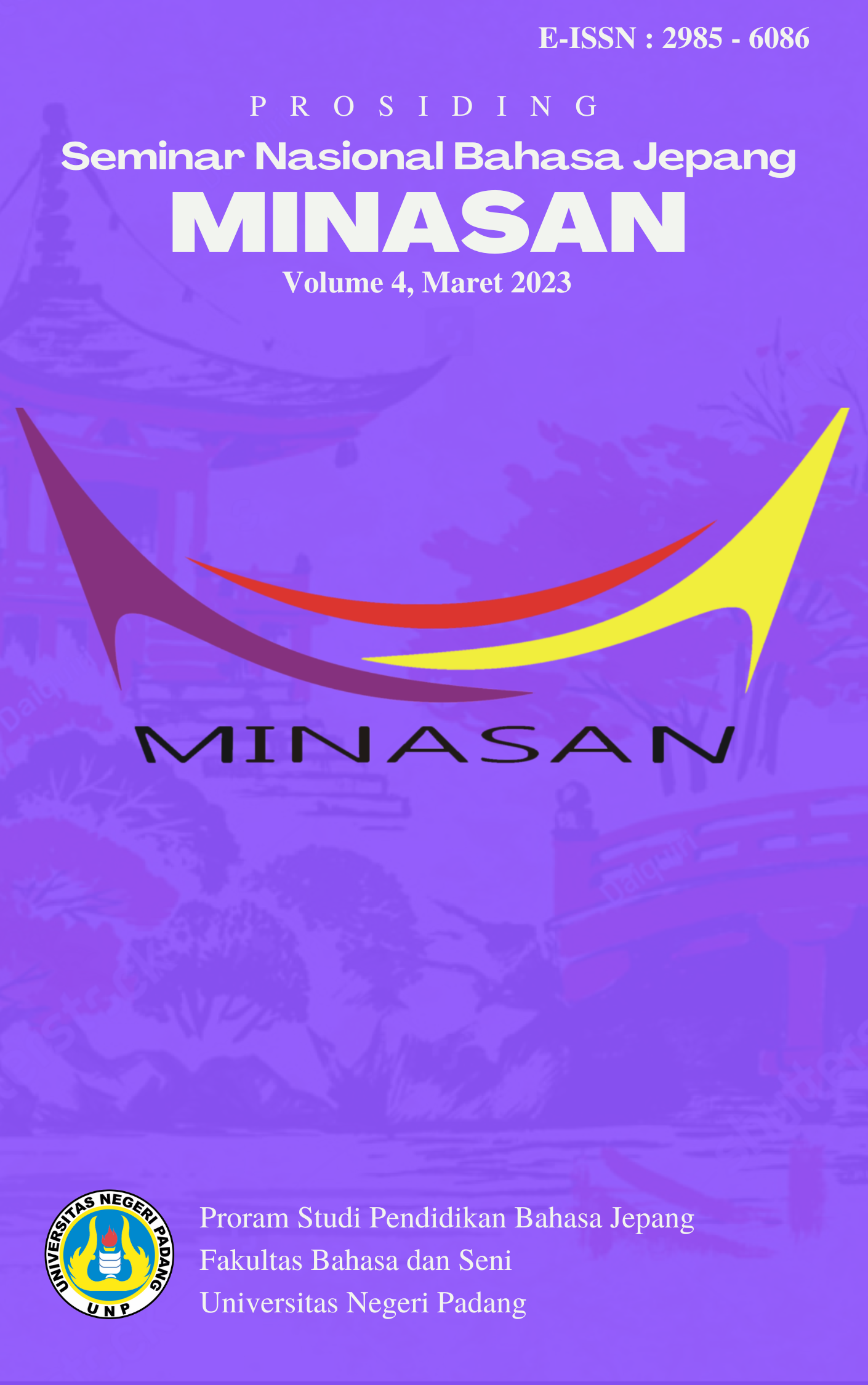ANALISIS FUNGSI SHUUJOSHI NA DAN YO DALAM ANIME DORAEMON STAND BY ME 1
Kata Kunci:
Shuujoshi function, Anime, Doraemon Stand By Me 1Abstrak
Shuujoshi is a particle located at the end of a sentence which is used to indicate the speaker's feelings. Shuujoshi have various functions and meanings. In one sentence shuujoshi there are several different functions. Researchers assess the importance of research that analyzes shuujoshi in anime, so that there are no student misunderstandings. The purpose of this research is to find out what are the functions of shuujoshi in the anime Doraemon Stand By Me 1. The research design used is a qualitative research with descriptive method. The data source in this study is the anime Doraemon Stand By Me 1. Based on the results of the research conducted, the researchers found 89 sentences containing the shuujoshi na and yo functions. The researcher found that out of 5 shuujoshi na functions, 4 shuujoshi na functions were found in the anime Doraemon Stand By Me 1. The shuujoshi na function that was not found in the anime Doraemon Stand By Me 1 was the function of asking others for approval. And found 4 functions of shuujoshi yo in the anime Doraemon Stand By Me 1.
Referensi
Abubakar, Rifa’i. (2021). Pengantar Metodologi Penelitian. Yogyakarta: SUKA Press UIN Sunan Kalijaga.
Arikunto, Suharsimi. (2019). Prosedur Penelitian Suatu Pendekatan Praktik. Jakarta: Rineka Cipta.
Arni, Rita. (2014). Penggunaan Irai Hyougen Berdasarkan Tingkatan Lawan Bicara Pada Pembelajaran Bahasa Jepang. Thesis. Bandung: Universitas Pendidikan Indonesia.
Chino, N. (1991). All About Particles. Japan: Kodansha Internasional Ltd.
Mahsun. (2012). Metode Penelitian Bahasa. Jakarta: Raja Grafindo Persada.
Prasetyo, H. A. (2017). Analisis Fungsi Penggunaan Shuujoshi Na, Yo, Zo, dan Ne Oleh Tokoh Pria Dalam Manga Naruto Volume 70 Karya Masashi Kishimoto. Sarjana Thesis. Surabaya: Universitas 17 Agustus 1945 Surabaya.
Santoso, T. (2015). Dasar-dasar Morfologi Bahasa Jepang Edisi 2. Yogyakarta: Morfalingua.
Sudaryanto. (2015). Metode dan Aneka Teknik Analisis Bahasa. Yogyakarta: Sanata Dharma University Press.
Sudjianto, & Dahidi, A.,. (2007). Pengantar Linguistik Bahasa Jepang. Bekasi Timur: Kesaint Blanc.
Sugiyono. (2013). Metode Penelitian Kuantitatif Kualitatif dan R&D. Bandung: Alfabeta.
Unduhan
Diterbitkan
Terbitan
Bagian
Lisensi
Hak Cipta (c) 2023 Winda surya, Rita Arni

Artikel ini berlisensi Creative Commons Attribution 4.0 International License.







